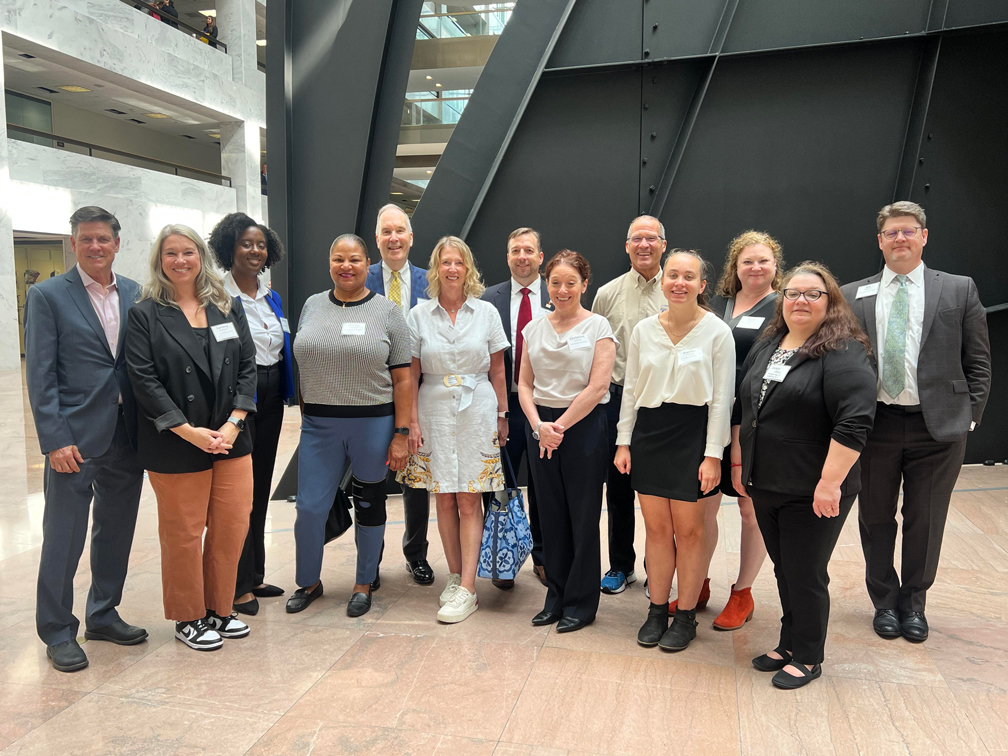Need to Know: Changes to First Class Mail Standard
Starting around October 1st the service standards for First Class letters, postcards, flat envelopes, parcels and some periodicals are expected to change. The Postal Service shared the initiative as part of their “Delivering for America” 10-Year Strategic Plan to achieve financial sustainability and service excellence released earlier this year.
What is a “Service Standard”? A service standard is the stated delivery performance goal for a mail class or product. Taking into account network logistics and feasibility, a service standard reflects the number of days after acceptance by the USPS of a mail piece by which the sender and recipient can expect it to be delivered. It’s important to know that Service Standards are delivery benchmarks, are not guaranteed by any means and the reality is that the USPS hasn’t been meeting some First Class Mailing Standards longer than a portion of the folks reading this have been in our Industry.
Why is the Postal Service making these changes? Under the direction of the PMG Louis DeJoy the Postal Service is cleaning up house and this move is being made to improve service reliability and increase efficiency which they feel will “help keep postage rates affordable for customers”. The Post Office knows they can’t meet their current Service Standards and that change is necessary for a more predictable service model.
What exactly is changing? A significant shift in use of air transport to surface transport is under way. The Postal Service doesn’t own their own planes which means they currently rely on Commercial Airlines to transport a portion of First Class Mail. Lack of control factors such as availability of planes, cargo space, impacts because of flight changes related to the pandemic all mean that the Postal Service can’t offer a predictable service model. They believe they have the surface transportation network and capacity necessary to offer mailers better service performance under the new platform.
This image supplied by the USPS shows what the Postal Service states will be a streamlining of operations:

How will mail be impacted? Mail traveling the greatest distances will be the most impacted (on paper at least). Current First Class Service Standards are either 1, 2 or 3 days. Going forward there will be 1, 2 ,3, 4 and 5 day standard depending on the distance between origin and destination.
This USPS chart shows the shift in the # of days of the standards and use of Air vs Surface Transportation:

What mailers should keep in mind;
- Not all Mail will be impacted – 61 percent of First Class Mail and 93 percent of Periodicals will keep their current Service Standards. And overall 70% of First Class Mail volume will receive a standard of 1-3 days.
- First Class Mail traveling locally – within a 3-hour drive between originating and destinating processing facilities — will maintain its current delivery standard of 2 days or less.
- It’s the mail that is traveling the furthest which will have the delivery standards pushed out. For example a letter originating in Maryland and going to California would likely have a 4 or 5 day standard vs a 3 day standard.
What is the Big Picture impact to Mailers?
For the most part time will tell. In theory if the USPS is able to roll out these changes AND meet the new Service Standards then a national mailer should only see a small change in delivery trends. Remember that they aren’t meeting their current standards 100% of the time so if they do what they say they will do – it won’t be that different from what they are actually doing now in terms of the time it takes to get a mailpiece delivered. A more regional mailer should see none or a nominal impact if their originating point is close to the destination point. An example would be a mailer that is delivering to addresses in the NY area that is entering the mail in NJ. This service standard will likely be the same but if that mailer moves mailshops and ends up entering the mail in Texas, the service standard would likely move from 3 days to 4 days as an example.
In some cases a mailer may determine that a better solution is to mail their outbound mail piece as Marketing Mail rather First Class as the gap between the time each takes to deliver is tightening. Consider factors such as delivery to the mailbox based on your origin point to your delivery zip, costs, as well as how important First Class mail is in your creative and overall donor experience.
Another important thing to remember in this shift is the potential for impact to an organizations cash-flow. As return mail comes back with first class postage, there may be a shift by a day or two in the mail that donors send back. This will be most apparent with donors who live further away from the caging company or the return mail address donations are sent to. For instance, if the caging company is located on the east coast and a large number of donors are on the west coast, there may be donations that take a couple of days longer than they did in previous years. Plan for this change now by adding a day or two to your normal response curve expectations. Keeping this in mind will help eliminate some of the stresses when it appears that donations are not coming in at the rate that was expected.
The USPS anticipates these changes will enable them to meet or exceed a 95% on time delivery. We’re staying close to this and will continue to keep you updates as the USPS rolls out these changes.



